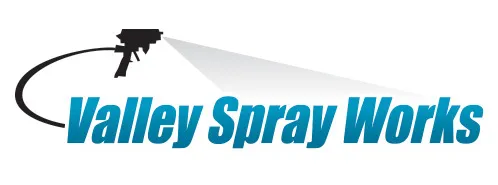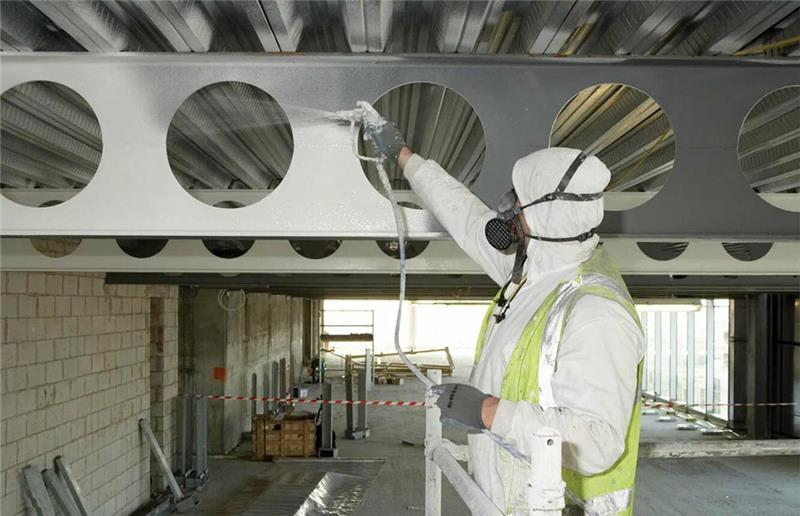Industrial environments demand more than just surface-level protection. At Valley Spray Works, we’ve seen firsthand how chemical exposure corrodes, weakens, and destroys infrastructure—sometimes gradually, other times alarmingly fast. Property owners and facility managers reach out to us not just because they want a fresh coat of paint. They’re looking for long-term defense, reliable performance, and fewer expensive repairs down the road.
That’s where Tnemec coatings come in. Known for their durability and engineered resistance to some of the most aggressive chemicals, these coatings are the gold standard in protective finishes. But the magic is not in the name it’s in the formulation, application expertise, and ongoing performance. In this guide, we break down exactly how Tnemec coatings resist chemical exposure and how Valley Spray Works ensures your surfaces stay protected for the long haul.
By the end, you’ll have a clear, practical understanding of what makes these coatings so effective and how our team applies them to help clients across Idaho and beyond extend the lifespan of their assets with confidence.
How Chemical Resistance Works in Protective Coatings
When chemicals come into contact with exposed metal or porous surfaces, degradation is inevitable. Corrosion, staining, pitting, and structural weakening follow. Tnemec coatings are formulated to interrupt this process by creating an impermeable barrier that resists molecular penetration.
Engineered Polymer Chemistry in Tnemec Formulations
Tnemec coatings aren’t just paint they’re complex chemical systems. Epoxies, urethanes, and fluoropolymers form the backbone of many of their high-performance formulas. Each resin type is selected for how it resists specific chemical families like acids, alkalis, solvents, and oxidizers.
At Valley Spray Works, we match the coating system to your environment. For example, wastewater treatment facilities benefit from novolac epoxies because of their strong acid resistance, while food processing plants might require coatings that resist both cleaning agents and moisture. Getting that match right matters.
Testing for Long-Term Resistance in Real Conditions
Lab testing is important, but field conditions are the true test. Tnemec coatings undergo ASTM performance evaluations like immersion testing, chemical spot tests, and cyclic weathering. We use this data to guide product selection based on your site’s exposure profile.
For clients dealing with splash-and-spill zones or chemical vapor contact, we’ve applied coatings proven to maintain integrity after years of exposure. That’s the level of protection our clients depend on—and why they call us when failure isn’t an option.
Surface Prep Makes or Breaks Performance
The best coating in the world won’t stick to a poorly prepped surface. Before any Tnemec product goes on, we make sure the substrate is clean, dry, and textured to the right standard.
Why Surface Cleanliness Impacts Chemical Resistance
Residual oils, rust, or old paint layers can interfere with adhesion. If the bond is weak, chemicals will find their way underneath and once that happens, it’s only a matter of time before coating failure. We often perform abrasive blasting to SSPC or NACE standards to ensure the surface is mechanically ready.
We’ve worked in environments where a few missed contaminants led to early blistering and delamination. Now, our crews take extra care with inspection before priming. That diligence up front saves clients thousands later.
Valley Spray Works Surface Prep Protocols
Our approach isn’t one-size-fits-all. Steel gets a different prep method than concrete. Each job gets its own prep plan, and our team uses inspection tools like surface profile comparators, chloride detection kits, and moisture meters to verify readiness. It’s the kind of attention to detail that gives our coatings their full service life.
Matching the Right Tnemec System to the Chemical Challenge
Different environments call for different coating chemistries. Tnemec offers dozens of systems, and the key is selecting the one that offers maximum protection for your facility’s specific exposures.
Examples of Tnemec Systems We Trust for Chemical Defense
- Series 141 Epoxoline: Excellent for immersion service and aggressive chemical resistance
- Series 434 Perma-Shield H2S: Designed for environments with hydrogen sulfide and other corrosive gases
- Series 22 Pota-Pox: Used in potable water applications with incidental chemical contact
We don’t just order coatings we specify them. That’s why clients rely on Valley Spray Works to guide them through technical data sheets, compare cure times, and interpret chemical exposure charts.
How We Determine the Best Coating for Your Operation
Before we quote any project, we ask the tough questions. What’s the pH of your wash-down chemicals? Are solvents involved? What’s the cleaning frequency? Then we build a coating system around your operation not the other way around. That’s how we prevent surprises and ensure success.
Application Quality: Where Product Meets Performance
Chemical resistance doesn’t depend on product alone it relies on the way it’s applied. Consistent mil thickness, correct cure windows, and proper environmental conditions are all essential.
Why Coating Thickness and Cure Times Matter
If a coating is applied too thin, it won’t provide adequate barrier protection. Too thick, and it may crack or cure improperly. Tnemec specifies precise DFT (dry film thickness) ranges, and we use calibrated tools to verify each layer.
Curing is another make-or-break moment. If conditions are too cold or humid, chemical cross-linking won’t complete, leaving you with a weak barrier. We adjust work schedules and use heaters or dehumidifiers as needed to meet cure specs.
Our On-Site Quality Control Process
We track every project with a quality checklist: surface temp, dew point, humidity, product batch numbers, recoat windows. Our techs document every step, so you’re never left guessing if the coating was applied properly. We believe transparency builds trust and long-term results.
Ongoing Protection Through Inspections and Maintenance
Even the toughest coatings need a watchful eye over time. Regular inspections can catch early signs of damage before chemical intrusion begins.
Signs That a Coating May Be Compromised
Look for changes in color, gloss loss, softening, or blistering these can all signal chemical degradation. We often find that physical damage from tools or foot traffic is a common weak point, especially around seams, welds, and high-touch areas.
If caught early, spot repairs can extend the life of the system without a full recoating job. That’s a win for your budget and your facility’s uptime.
Valley Spray Works Inspection and Repair Services
We offer scheduled coating inspections as part of our service. Our techs assess adhesion, coating integrity, and environmental wear. If we see an issue, we recommend a targeted fix—fast and cost-effective. You won’t need to shut down operations unnecessarily.
Ready to Make the Right Coating Choice? Let’s Talk
When it comes to chemical protection, guesswork leads to failure. Tnemec coatings deliver proven resistance, but only when selected and applied by professionals who understand the chemistry, application, and environment.
That’s what we offer at Valley Spray Works. We don’t just apply coatings—we provide solutions that hold up. Whether you’re facing daily chemical exposure or just want peace of mind for the future, we’re ready to help.
Reach out today. We’ll walk you through your options and develop a plan that works—for your facility, your schedule, and your bottom line.
Phone: (208) 490-9260
Email: [email protected]
Your Questions, Expertly Answered by Valley Spray Works
What chemicals can Tnemec coatings resist?
Tnemec offers systems resistant to acids, alkalis, solvents, hydrocarbons, and oxidizers. We match the system to your specific exposure based on chemical type, concentration, and duration.
Are Tnemec coatings safe for use in food and beverage plants?
Yes. Several Tnemec products meet USDA and FDA compliance for incidental food contact and frequent cleaning chemical exposure.
How long do Tnemec coatings last in a chemical environment?
With proper surface prep and application, coatings can last 10–20 years or more. Inspections and touch-ups extend that lifespan further.
Can coatings be touched up after chemical damage?
Yes. Damaged sections can often be spot-prepped and recoated without stripping the entire surface. Our team handles these touch-ups efficiently to minimize downtime.
Do you provide coating services in Idaho only?
We’re based in Idaho but frequently travel to surrounding states. We bring our equipment, team, and expertise to you.
How do you determine which Tnemec product is right for my facility?
We assess your specific conditions chemical exposure, temperature, humidity, and physical wear—to select the optimal system.
Is surface prep included in your coating service?
Absolutely. We handle full prep in-house, including abrasive blasting, cleaning, and priming.
How thick should a chemical-resistant coating be?
It depends on the product, but most Tnemec systems specify a dry film thickness between 6–20 mils. We use gauges to verify application meets specs.
Can Tnemec coatings be applied in cold weather?
Yes, but cure time and product selection are key. We use cold-cure formulations and control temperature and humidity to meet standards.
What’s your lead time for scheduling a coating project?
It varies based on project scope and current workload, but we do our best to accommodate tight schedules. Reach out for a consultation.



